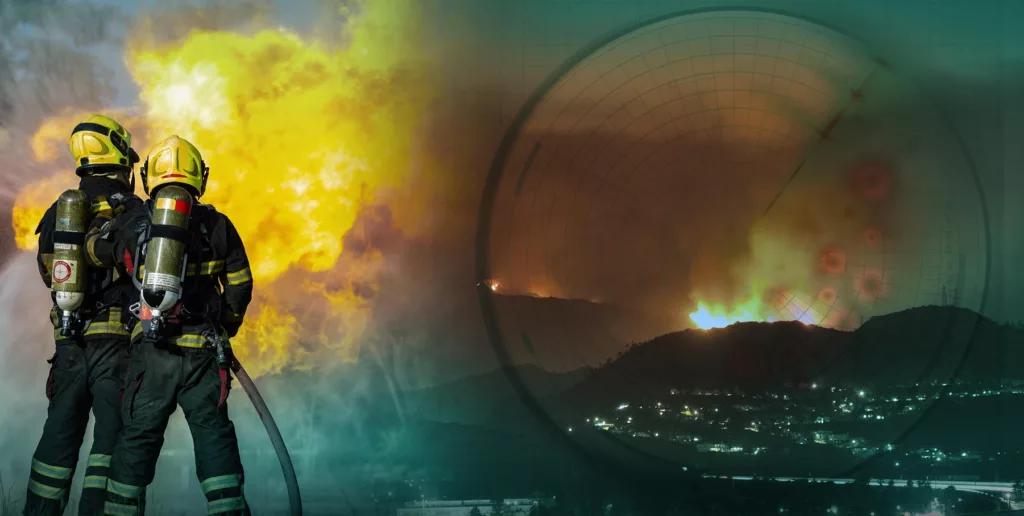Recently, millions of people in the U.S. and Canada were affected by the haze and smoke from more than 100 wildfires burning in Québec. The Québec fires were only a portion of the more than 400 wildfires burning across Canada. High temperatures, unusually dry conditions and lightning strikes combined to start the Québec fires in May. Additionally, accidental human activity is suspected in others across the country.

As the fires burned, prevailing winds carried the smoke across the Northeastern United States, producing extremely unhealthy air. Worried about people breathing in harmful particles too small to see, health officials warned everyone to stay indoors, recirculate the air in their homes and use air conditioning and air purifiers whenever possible. Health alerts recommended wearing N95 masks to offer “some” protection from those particles.
So what’s the risk to people?
Wildfire smoke is more toxic than normal air pollution. It can contain soil, chemicals, metals, plastics, carcinogens and other harmful substances. It contains particulate matter (PM) that is smaller than dust, pollen, mold or the diameter of a human hair. PM can penetrate homes and other buildings and is a threat because it is usually too small to see.
Some of the immediate health effects from wildfire smoke include coughing, trouble breathing, stinging eyes, scratchy throat, runny nose, wheezing and shortness of breath, chest pain, headaches, asthma attacks and tiredness.
People with respiratory issues and cardiovascular issues are at higher risk of health problems and even death while breathing wildfire smoke than they are normally. Death rates across entire populations increase during periods of wildfire smoke exposure, so everyone should view themselves at risk from this. Hospitalizations, ER visits and physician office visits increase during periods of wildfire smoke exposure, underscoring the severity of this biorisk. Exposure to wildfire smoke also can increase rates of lung cancers and brain tumors.
Wildfire smoke is a biorisk
Biorisks, such as smoke from wildfires, create physical world threats that often combine to impact security for workforce, inventory, supply chain and business continuity. Biorisk is new to many senior security leaders but will soon become an important part of enterprise risk portfolios.
You already know some biorisks – infectious disease events – from the work you did during the pandemic, and smoke is one of several environmental biorisks that include heat waves, air quality problems and flooding. Infrastructure events create biorisks and include electrical grid outages, hospital evacuations and boil water notices. Geopolitical events such as refugee movements, civil unrest and war are also biorisks.
How has your enterprise responded to the threat of wildfire smoke?
The Canadian wildfires are hundreds of miles away from most of the places affected in the U.S., but because of the size of the smoke plume, assets and employees could be affected from Maine to Alabama and as far west as the Great Lakes. Here are just some of the issues to consider:
- Do you have access to trusted information about weather-related emergencies, such as wildfires, heat, floods, hurricanes, tornadoes or storms?
- Do you have connections to experts who can recommend appropriate actions during emergencies?
- If the fires are close to your facilities, do you have plans to help employees who are forced to evacuate?
- Do you have plans for air filtration in offices, manufacturing plants, warehouses and other work sites?
- Do you have HR plans in place if employees are forced to miss work because of health concerns?
- Do you have alternate plans if your employees are forced to cancel or delay air travel?
- If fires affect fuel supplies, are you prepared to manage lower fuel availability or higher fuel prices?
No One is Coming to Save You
Your job includes protecting physical structures, assets and network capabilities, but it especially means you are responsible for keeping your employees safe. People are the key to business continuity. Their well-being is the number-one priority and is essential to economic security.
Adopting a biorisk strategy is a best practice for senior security leaders. The earlier you identify gaps and develop biorisk management plans to fill them, the more resilient your enterprise will be. Also, your biorisk management plans should involve your entire workforce, just like your cybersecurity plans do. Starting to plan now will give you a solid foundation for actions in the future.
The Public Health Company Provides Early Expert Intelligence
PHC Global has developed its Pharos Platform to act as an early warning intelligence system. Pharos can work independently or connect to your existing systems via an API to give you a head start on working your plan. PHC Global experts are also on hand with alerts and guidance so you can determine when action is required – and when it’s not.
If you’d like to learn more about biorisks and PHC Global, view this short introductory video.



